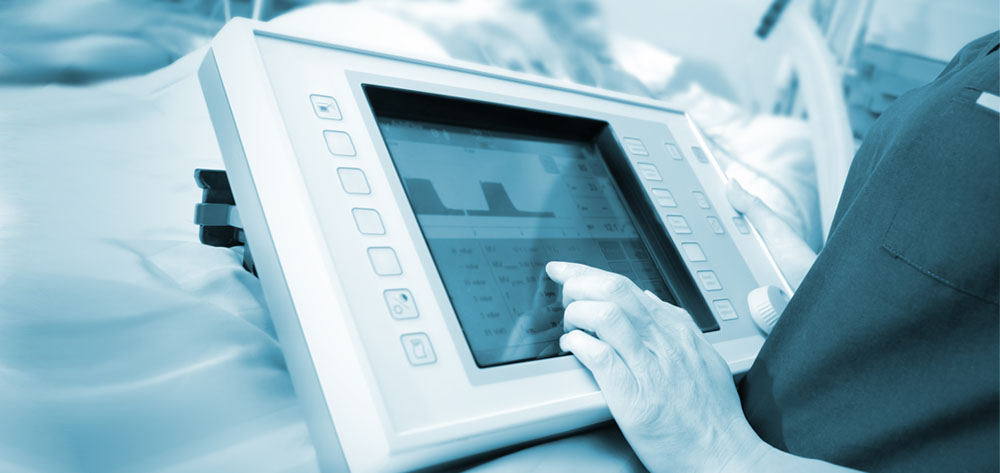As an ICU nurse you’ve probably encountered the critically ill patient who is experiencing hallucinations, delusions, and confusion. Healthcare providers are learning just how detrimental this state of mind can be to the patient’s recovery process as he or she transitions from the ICU setting. One proposed intervention, the ICU diary, has been used in Europe since the 1980s but is not widely used in the United States. I conducted the first evidence-based practice (EBP) ICU diary pilot project in an acute care setting located in Central Texas.
Roots of the project
I first became aware of the ICU diary after a family member returned to the unit and complained that she had developed post-traumatic stress disorder (PTSD) related to her daughter’s stay in the ICU. In the past I cared for wounded soldiers returning from Iraq and Afghanistan and witnessed the physical and emotional trauma they have experienced, which can lead to their developing PTSD. I decided I wanted to understand how PTSD can develop in critically ill patients and family members. I conducted an in-depth scholarly review of literature, and that is when I learned about the ICU diary.
Purpose of the diary
The ICU diary provides written factual documentation, designed with the purpose of filling in the patient’s gaps in memory of their stay in the ICU. According to experts, it’s the patients’ inability to remember what happened to them while they were critically ill that can cause them to develop PTSD. Reported psychological problems stem from memories that are based on distorted, vivid, and frightening hallucinations and delusions. The diary is written by the RN and family members and is a written record of what happened to patients while they were critically ill. The diary does not make patients remember what happened but is instead designed to fill in the blank portions of their memories.
When patients are unable to remember what happened to them, their ability to compare how far they have come in their recovery process is based on their state of health before becoming critically ill. The gap in memory can lead to the formation and storing of traumatic memories. Family members and health care providers can fail to understand why the patient does not see how far they have progressed and how well they are doing.
The diary can help patients address what they feel after their ICU stay. (See Physiology and the ICU diary below.)
Physiology and the ICU diaryWhen critically ill patients are in the ICU, they are fighting for their lives. This creates a condition called “fight or flight” where the brain’s perception neural pathway becomes hijacked and the amygdala takes charge. Much of the critically ill patient’s path to recovery is spent in the “fight or flight” phase. There is much to be learned from the process of meeting with patients as they see the photographs and diary for the first time. As a certified professional health and wellness coach, I assist patients by asking probing questions that stimulate them to find the answers from within. The ICU diary and photographs are designed to help patients find the answers from within as well. The ICU diary and photographs shift the neural pathway by sending calming messages of influence that originate from the higher order prefrontal cerebral cortex to the lower order amygdala center. The prefrontal cortex is where the higher-order functions of problem solving, complex thought, and control of emotions take place. The process of viewing the diary and photographs slows the patients’ intense emotional responses through the reasoning process of the prefrontal cortex. This helps patients to be more aware of their emotions, to name them, and to modify their emotions. |
My project
I designed an ICU diary that includes pictures taken of the patient while he or she is on the ventilator and at milestones marking the patient’s progress during the ICU stay. The pictures show patients they really had been “that sick” and what they looked like, and the photos also help patients to see how far they have progressed. Permission is obtained before photos are taken.
The diary gives the family members something to do, a hands-on approach to caring for the patient. The RN and family members read each other’s entries, creating open communication and transparency. Many times family members are unable to absorb everything we’re telling them. The diary allows them to read the words and to digest what is happening to their loved one.
What RNs write in the diaries are the conversations they have had with the patients and family members. The first entry is written by the RN and tells patients what happened to make them come to the ICU. “Your heart stopped beating, you were having a difficult time breathing and so you were intubated and put on a breathing machine, the ventilator.” The remaining entries include information about what occurred while the patients were in the ICU. No personal information that would be unethical to share is entered in the diary. It’s helpful to include a list of medical terms to help patients and family members understand what they are reading.
When to use a diary
The diary is not for every patient. Previous research findings have indicated the diary is not recommended for patients who have a history of PTSD and have been diagnosed with a psychological disorder. Therefore, it is recommended the diary be introduced based on a case-by-case decision. The first entry takes the longest to write, approximately 30 minutes, and the following entries take about 5 minutes.
The ICU diary is an important nursing intervention designed with the purpose of helping patients understand what happened to them while they were critically ill. It is the gift of care written by the RN and family members and is given to patients with the purpose of filling in lost memories.
Judy J. Martin is a staff nurse at Texas Health Harris Methodist Hurst-Euless-Bedford Hospital in Bedford, Texas.
Selected references
Long AC, Kross EK, Davydow DS, et al. Posttraumatic stress disorder among survivors of critical illness: creation of a conceptual model addressing identification, prevention, and management. Intensive Care Med. 2014;40:820-9.
Bienvenu OJ. Effective post-ICU rehabilitation of critical illness survivors: what do we know? Critical Care Med. 2014;42:1320-1.
Egerod I, Christensen D, Schwartz-Nielsen KH, et al. Constructing the illness narrative: a grounded theory exploring patients’ and relatives’ use of intensive care diaries. Crit Care Med. 2011;39:1922-8.
Jones C. Introducing photo diaries for ICU patients. J Intensive Care Society. 2009;10:183-5.
Siegel DJ. Brainstorm: The Power and Purpose of the Teenage Brain. New York, NY: The Penguin Group; 2013.



















1 Comment.
Has anyone found any legal issues with staff writing entries? Did the diary go through your legal department? Did any legal “disclaimers” need to be identified in the diary?